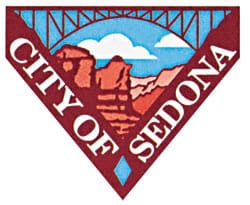The city of Sedona has four sources of revenue to pay for services and capital improvements
By Susan Johnson
Larson Newspapers
The city of Sedona has four sources of revenue to pay for services and capital improvements.
There are four primary sources of revenue: sales and bed taxes, services and fees, government revenue sharing and earnings on investments.
If the city officials’ general assumptions are right — that tourists pay approximately 70 percent of the taxes collected — then it’s visitors who pay the biggest chunk of the freight, but only by a few dollars.
In Fiscal Year 2006-07, which ended June 30, total city revenues were $28 million. Of that, taxes were $15 million.
Seventy percent of the $15 million equals an estimated $10.5 million coming from tourists.
The other 30 percent, amounting to $4.5 million, comes from residents.
Residents also contribute, directly and indirectly, to the bulk of the $5.1 million in services and fees collected by the city, for a total of $9.6 million.
The city also gets money from intergovernmental revenue sharing in the form of grants, taxes and contributions that total $5.3 million.
Investment earnings on unused funds are the final piece, amounting to $2.5 million.
Using the above calculations, are the tourists paying their fair share of the costs of the city?
Sedona’s Chamber of Commerce estimates that approximately 3 million people visit Sedona every year.
That comes to an average of 8,200 extra people a day if every visitor stays only one day, but many visitors stay longer, swelling the city on a daily basis to more than double its permanent population of approximately 12,000.
All those extra people are heavy users of the city’s infrastructure, including roads, sewers, transportation, water and parks.
Tourists are also responsible for much of the resort and commercial employment Sedona residents and commuters from other Verde Valley communities, who put additional pressure on the city’s services and employees.
Tourists contribute to taxes and developers of timeshare properties developed since the late 1990s must pay in-lieu-of-bed-tax fees, but many visitors stay in timeshare units that do not generate any bed taxes for the city nor do they contribute in the form of real estate transfer fees.
During a recent investigation, the Sedona City Attorney’s Office found 450 illegal short-term rental homes in Sedona advertised on the Internet, and are probably not handing over bed taxes they owe to the city, leaving additional sums of money uncollected from visitors.






















